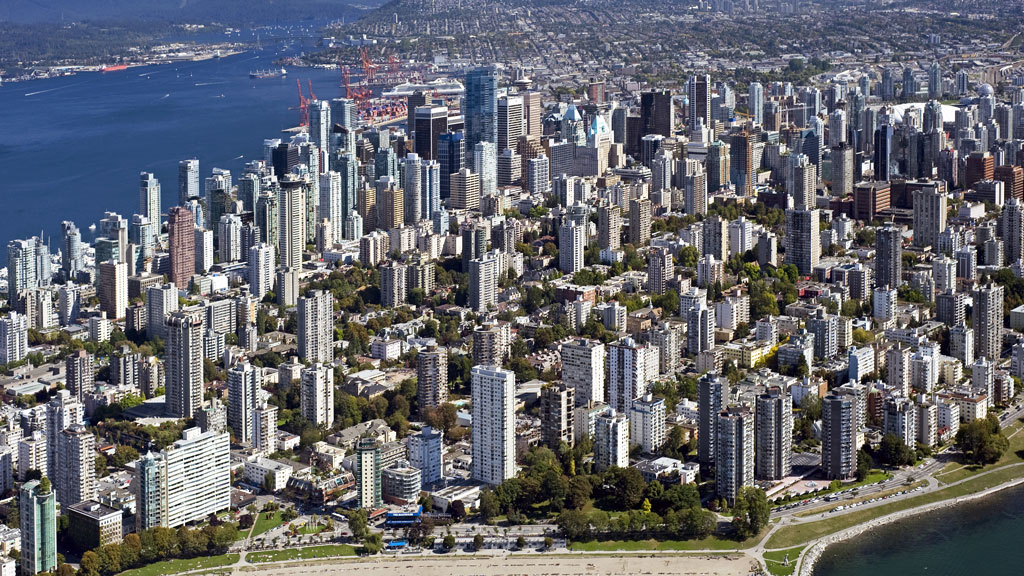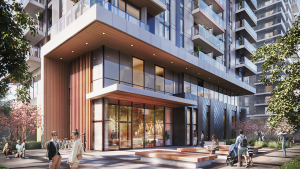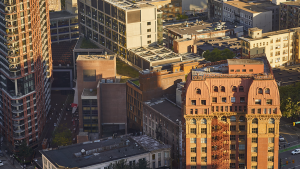The solution may lie in doing more with less as land for large-bay space and industrial developments becomes a scarcity around Metro Vancouver.
“Currently, Metro Vancouver has one of the tightest industrial markets in Canada due to the shortage of available land,” Cameron Archer, director of sales and marketing with Orion Construction, told the Journal of Commerce.
“The demand for large-bay industrial space continues to soar, but with a lack of industrial land in Metro Vancouver, supply can no longer meet demand.”
In its January 2023 report on the Vancouver industrial real estate market, Colliers International states the current vacancy rate in the Greater Vancouver Area (GVA) is 0.2 per cent.
“Typically, an industrial market with three to five per cent of vacancy is considered balanced – the GVA market would need to add over six million square feet of vacancy from any combination of new, unleased industrial space, or from vacancy in existing buildings to see the rate rise back to three per cent,” reads the report.
Vancouver’s land-problem stems from two main causes. The first is the simple fact that it is one of the best cities in Canada to operate a business.
“Access to the port and the ease of transportation south and east make the Metro Vancouver geography incredibly desirable. The biggest challenge now is the lack of available developable sites,” he said.
Another driving factor is that the current production of supply is consumed before developments are even complete.
“The majority of developments that are under construction right now have already been absorbed, so although it may seem like more supply is coming to the market, this is not the reality.”
As the ability to expand becomes undermined by a lack of available land, Archer suggests a solution similar to what is being done in residential markets across the country: doing more with less, also known as densification.
“Similar to residential developments, industrial construction companies and development groups are assessing the ways in which we can add density to our future projects.”
Archer said stacked developments/multi-storey warehouses will be one of the backbones of navigating the growing shortage.
“What makes them unique is the ability of these structures to bear substantial weight. They have large freight elevators, access ramped drive aisles and other unique characteristics,” said Archer.
“Densification will be key to bringing much-needed industrial space to the market.”
But providing a unique solution also comes with unique challenges.
“Understanding that location dictates substantial earthworks variances from project to project is a major aspect of the feasibility. With their structural requirements, their foundational needs become increasingly high and all the differences from a traditional single-storey tilt-up building all factor into a higher building cost.
“This, paired with higher land costs caused by our constrained market, ensures exceptional due diligence is executed through the initial stages of these types of projects.”
Another important construction trend in 2023 is the use of phasing for construction projects, which can allow a steady stream of in industrial space getting introduced to the market.
“Phasing projects can help alleviate market pressures because we can see how the market absorbs each project phase and build accordingly,” Archer said.
“This also allows for continuously bringing more supply to the market rather than bringing the space at once, which can be leased out immediately in today’s market.”
Phasing allows for better project organization and can bring down costs as well.
“We can pre-purchase materials before costs rise further and store them until needed,” he said.
This can prevent projects from dealing with “rising costs or delays in the timeline due to inflation and supply chain challenges.
“By doing this, we purchase exactly what is needed for the project, there is less waste and we build quality developments.”
Archer said one of the benefits that comes with Orion’s approach to the market is its design-build process, which enables the company to futureproof their projects.
“With our design-build process, we can design and build our developments to accommodate any possible changes and challenges in the future, such as environmental impacts, natural disasters and even new technological developments that future tenants will require.”
Co-operation across public and private sectors is key in addressing challenges before they arise.
“Our great partnerships often drive our building requirements. Working with development groups holding their future projects to a higher standard, such as net-zero, allows us to highlight the required best building practices.”











Recent Comments
comments for this post are closed